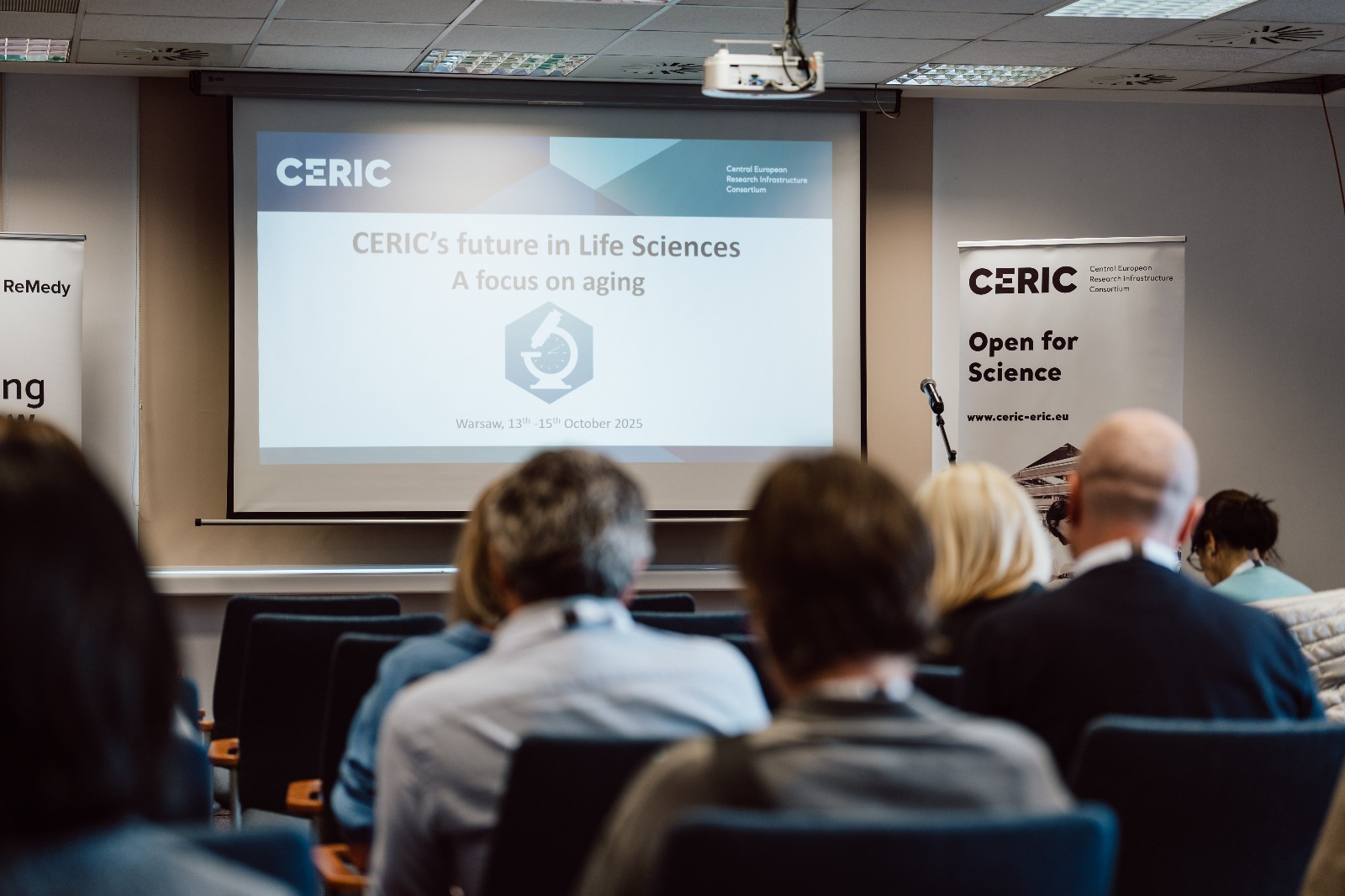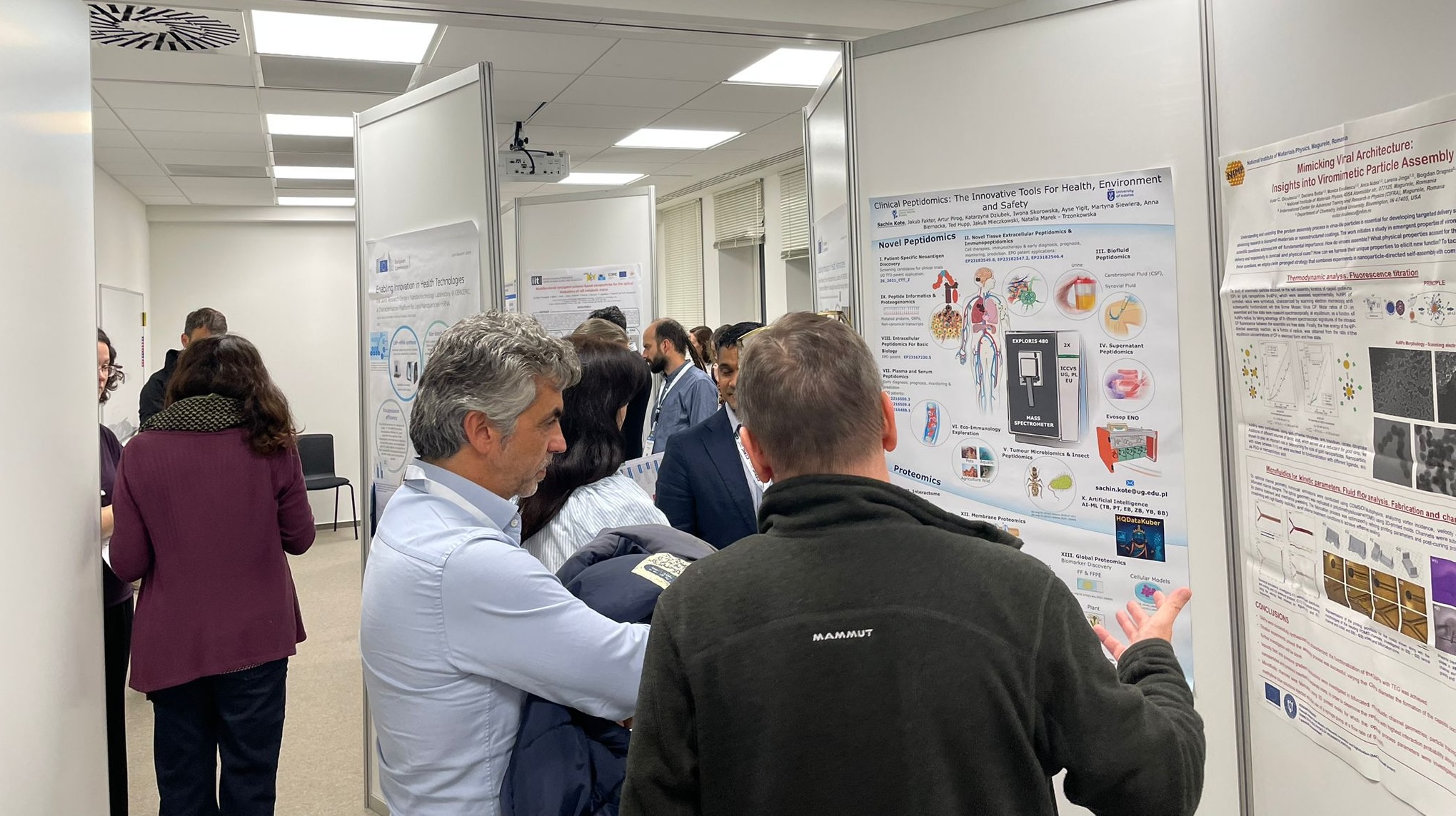CERIC’s Future in Life Sciences: an inspiring Symposium in Warsaw
|As part of CERIC-ERIC’s ongoing mission to strengthen cutting-edge research in Life Sciences and bring the local research community together, CERIC-ERIC organised a symposium dedicated to exploring the theme of aging through the lens of advanced structural and molecular techniques.
Hosted in Warsaw from the 13th to the 15th of October at the International Institute of Molecular Mechanisms and Machines of the Polish Academy of Sciences (IMol), the event aimed to strengthen the bridge between the multitechniques research infrastructures offer at CERIC and the biomedical research community.

More than 60 scientists from all over Europe, including researchers from all the CERIC Partner and Associated Facilities, participated in an inspiring discussion focused on three aging-related topics: structural biology, muscle-skeletal disorders and neurodegeneration.
Ageing is a multifaceted biological process and understanding it requires a diverse toolbox: within this context, the symposium featured presentations from scientists utilising state-of-the-art technologies involved in (bio)materials characterisation, including cryo-electron microscopy (cryo-EM), nuclear magnetic resonance (NMR), small-angle X-ray scattering (SAXS), crystallography, and many more. These instruments allow to reveal the most detailed, atomic-level information about the molecules of life, and to study in conditions equivalent to those in living systems the way in which potential drugs may interact with biomolecules, as an essential step in developing new therapies.

The symposium revealed the importance of developing and strengthening connections with a diverse user community, who can also provide alternative perspectives through complementary techniques enabling more complex problems to be tackled, particularly in the critical and challenging field of therapies and treatments for the aging population: “This multidisciplinary approach is central to the services CERIC provides, drawing together research facilities and their expert scientists and user communities across Europe” – remarks Professor Andrew Harrison, CERIC-ERIC Executive Director – At the same time, important discussion threads emerged during the symposium, that will help us to draw up guidelines for CERIC’s future in this field. These included the importance of support laboratories for sample preparation and pre-characterisation, as well as the increasingly central role played by AI technologies in data processing and interpretation, particularly across different measurements using multiple techniques”.



